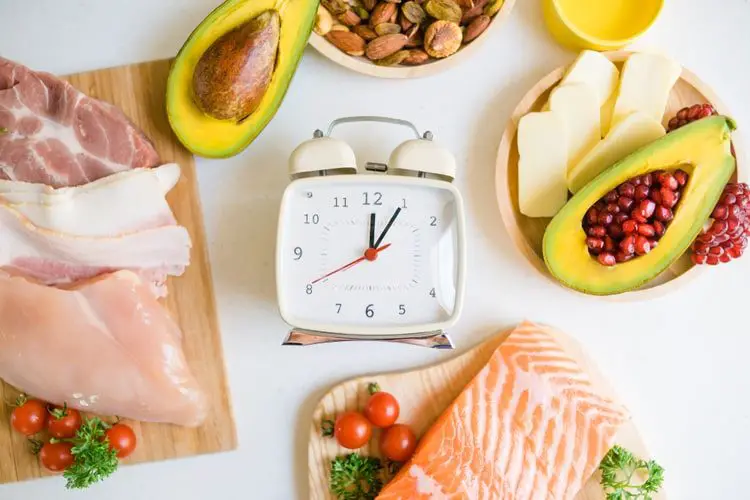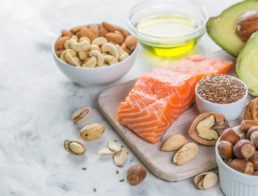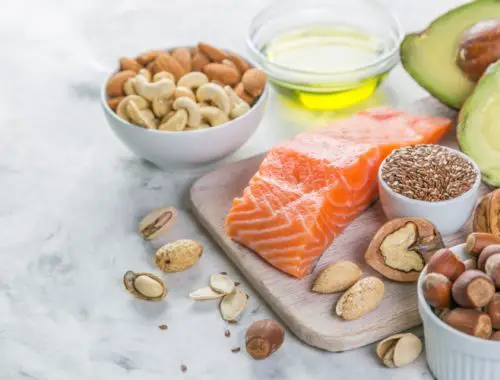Intermittent fasting is a big buzz-term on the Internet today. It’s been promoted for weight loss and diabetes. Maybe you’ve seen a friend or coworker on a fasting diet. Are these people crazy, or are they on to something?
If you’re interested in learning about intermittent fasting, keep reading! Here, you’ll find out what research is available on fasting. Also, we’ll break down some intermittent fasting methods that are out there.
We’ve also put together a guide to ace the intermittent fasting game. Check out our expert tips to make dieting and fasting easier on you!
What is intermittent fasting?
Intermittent fasting is when you don’t eat for certain periods of the day (or week). Biologically, our bodies have a “fed state” and a “fasting state.” Depending on which state you are in, our bodies adjust and utilize what nutrients they have available at the time. Let’s keep going to learn about types of fasting.
Types of Intermittent Fasting
When I think of fasting, I immediately think of hunger. No one likes to be hungry! If you cringe at the thought of not eating every single day, then rest assured that intermittent fasting does not have to be extreme. Phew!
Here’s a table that categorizes fasting methods in terms of intensity:
| Extreme Intermittent Fasting | Moderate Intermittent Fasting | Mild Intermittent Fasting |
|---|---|---|
| · Alternate day fasting (eat one day, fast the next) · 5:2 fasting (eat five days per week, fast two days per week or eat 25% of your calorie needs on fasting days) |
· 20:4 fasting (eat in a 4-hour period, fast for 20 hours) · Spontaneous fasting (skipping meals at random) |
· 16:8 fasting (eat in an 8-hour period, fast for 16 hours) · Circadian rhythm fasting (eat in a 10-hour period, fast for 14 hours) · Time-restricted eating |
| These methods are extreme because you may not eat anything on fasting days. Not only will you likely experience extreme hunger pangs, but you’ll also have to control yourself on non-fasting days to avoid overeating. | Moderate fasting has less restriction than extreme fasting methods, but you will most likely still experience annoying hunger and overeating. | With mild intermittent fasting, you can eat every day but you change the times in which you eat. Overall, mild fasting helps you avoid eating all day or eating late at night. |
Turned off by the extreme fasting methods? Luckily, current research shows that extreme methods do not yield more weight loss than a regular low-calorie diet (1)! According to the Academy of Nutrition and Dietetics, extreme fasting can make you less focused and cause you to overeat on non-fasting days.
Mild intermittent fasting methods may be the best option for most people to try, namely for the time-restricted eating (2). A good thing about time-restricted eating is that you generally restrict late-night eating, which can help prevent snacking and stomach distension before bedtime.
Ace the Intermittent Fasting Game
If you want to try intermittent fasting, don’t make it harder than it has to be. There are many ways you can manipulate your diet to satiate yourself. Here are some insider tips on how to ace the intermittent fasting game!
Step 1: Fill up with fiber
Fiber comes from fruits, vegetables, nuts, seeds, legumes and whole grains. Fiber keeps things moving in your gut. It also can make you feel full. Plus, meals with lots of fiber-rich foods tend to be lower in calories, so you can add lots of fiber-rich foods to your plate.
Add fiber to each meal and snack so that you stay full. Here are some ways to get fiber:
- Salads
- Roasted vegetables
- Fresh fruit
- Whole grain bread
- Garnish with nuts, seeds
One more fiber tip: If you increase your fiber intake, make sure you increase your water intake to avoid constipation.
Step 2: Win with water
Water and other fluids are great to help you stay full when fasting. Check out these ideas to get more fluid:
- Drink a glass of water before your meals to fill up your stomach
- Add fluid to your meals in soups, sauces, smoothies
- Get fluid from fresh fruits, veggies
Insider fluid tip: If you’re hungry while fasting, drink a glass of water, wait 20-30 minutes, and then reassess if you are still hungry. You may just be thirsty. Need a good water bottle? Try this water bottle by Buzio.
Step 3: Pack in the protein
Protein is another special nutrient that can keep you full when fasting. Make sure all meals and snacks have a protein source. Need inspiration on how to get more protein in the diet? Choose from this list of protein sources:
- Meat, poultry
- Dairy (milk, yogurt, cheese)
- Eggs
- Beans, legumes
- Fish, seafood
- Nuts, seeds
- Quinoa
Protein and weight loss tip: If you’re trying to lose weight (and eat healthier), choose lean protein sources. Lean proteins have lots of protein without lots of calories from fat. Eggs, skinless poultry, shrimp, beans, legumes, skim milk, and low-fat yogurt are lean protein sources.
Step 4: Fats are your friend
People trying to lose weight tend to be wary of fatty foods. But when it comes to intermittent fasting, fats are friends! Don’t go eating a bunch of fatty foods, though. Know how to use fats to your advantage.
Fat is a nutrient that contains lots of calories per serving. Eating a lot of calories can hold off hunger. So, eat fatty foods in small amounts. Also, try to eat more heart-healthy fats than unhealthy fats.
Here’s a table of fats you can eat while fasting to hold off hunger:
| Healthy Fats (pick these often) | Recommended serving | Unhealthy Fats (limit these) | Recommended serving |
|---|---|---|---|
| Avocado | 1/8th of an avocado | Whole milk | 4-8 ounces |
| Cooking oil (olive, flaxseed) | 1-2 Tbsp | Beef, pork | 3 ounces |
| Nuts, seeds (try this healthy nut mix) | ¼ cup | Butter, margarine | 1 tsp |
| Nut butter | 1-2 Tbsp | Cheese | 1 ounce |
| Fatty fish (salmon, tuna, sardines) | 3-6 ounces (try Starkist pouches | Fried foods | Varies |
Remember: Adding a small amount of fat can make your meal or snack exponentially more satisfying.
Disclaimer: Fasting is Not for Everyone
As a registered dietitian, I would not recommend extreme fasting methods due to the mental, physical and behavioral effects that can arise.
If you have any of the following conditions or take these medications, you should not engage in intermittent fasting, especially extreme fasting:
| Who should NOT engage in intermittent fasting? |
|---|
| · Diabetics |
| · People taking diabetic medications, insulin, warfarin, Coumadin |
| · People with a current or past eating disorder |
| · People needing to gain weight, especially those with hypermetabolic conditions (malnutrition, cancer) |
| · Pregnant, breastfeeding women |
| · Children, teens |
Ask your doctor and dietitian if you are able to participate in intermittent fasting.









